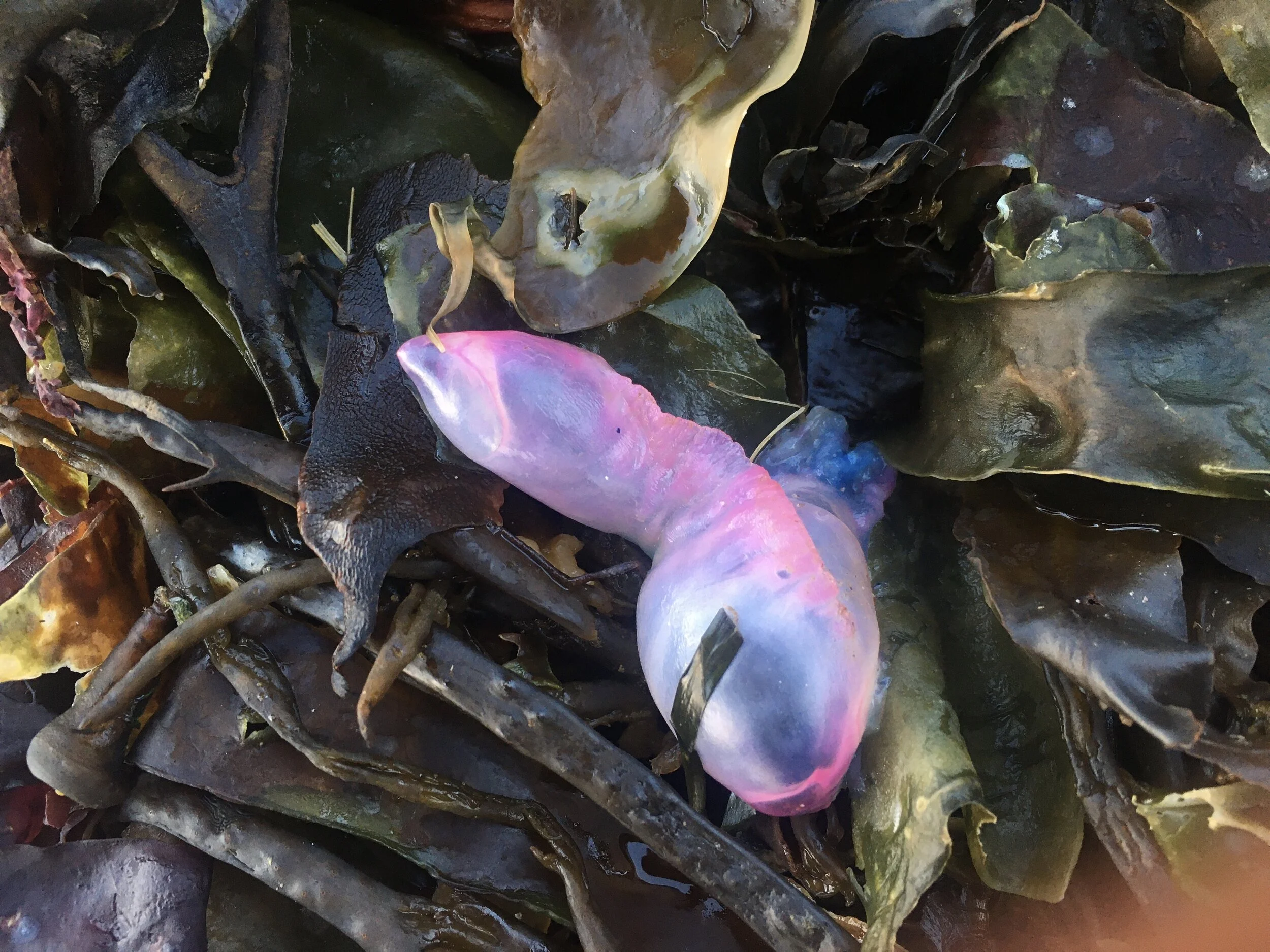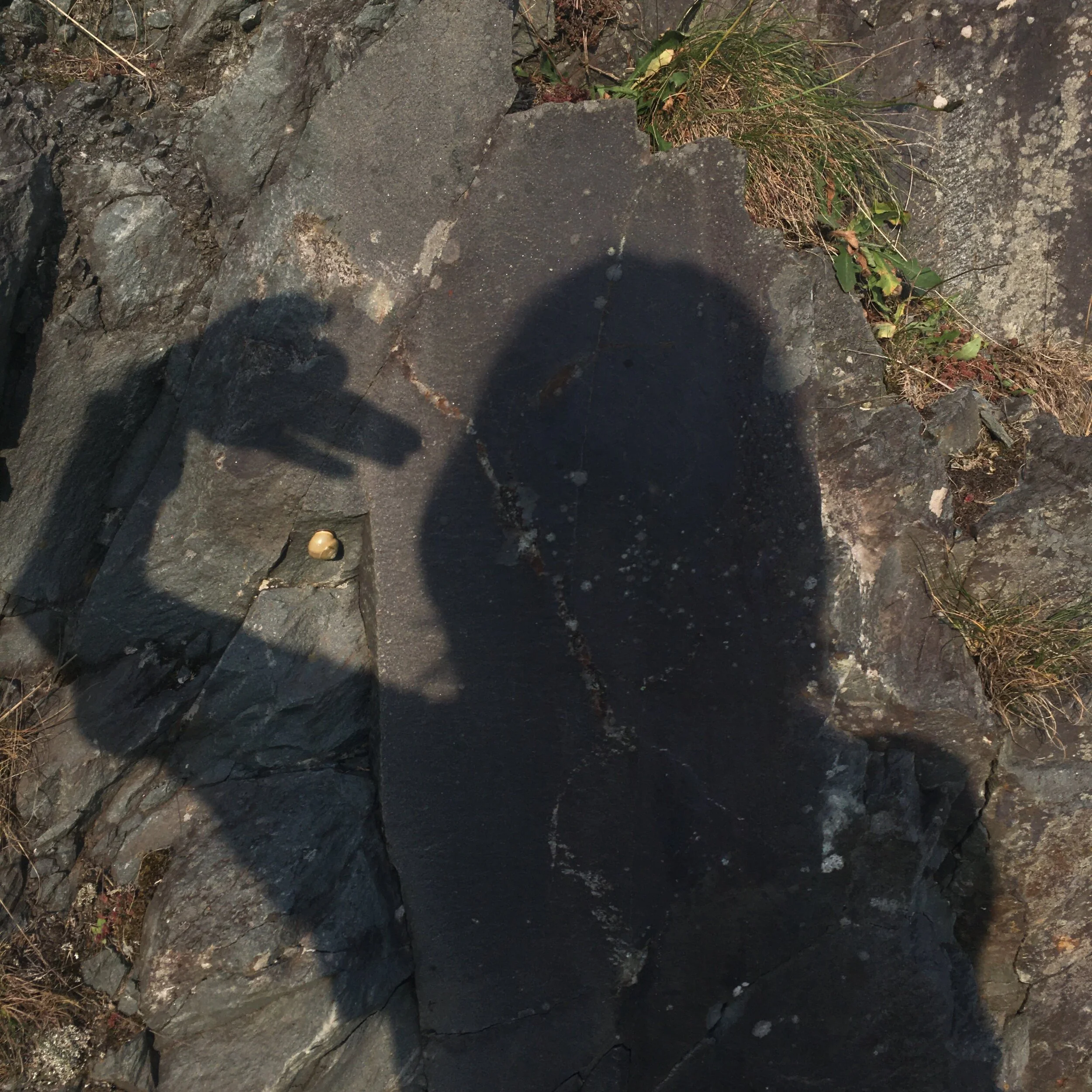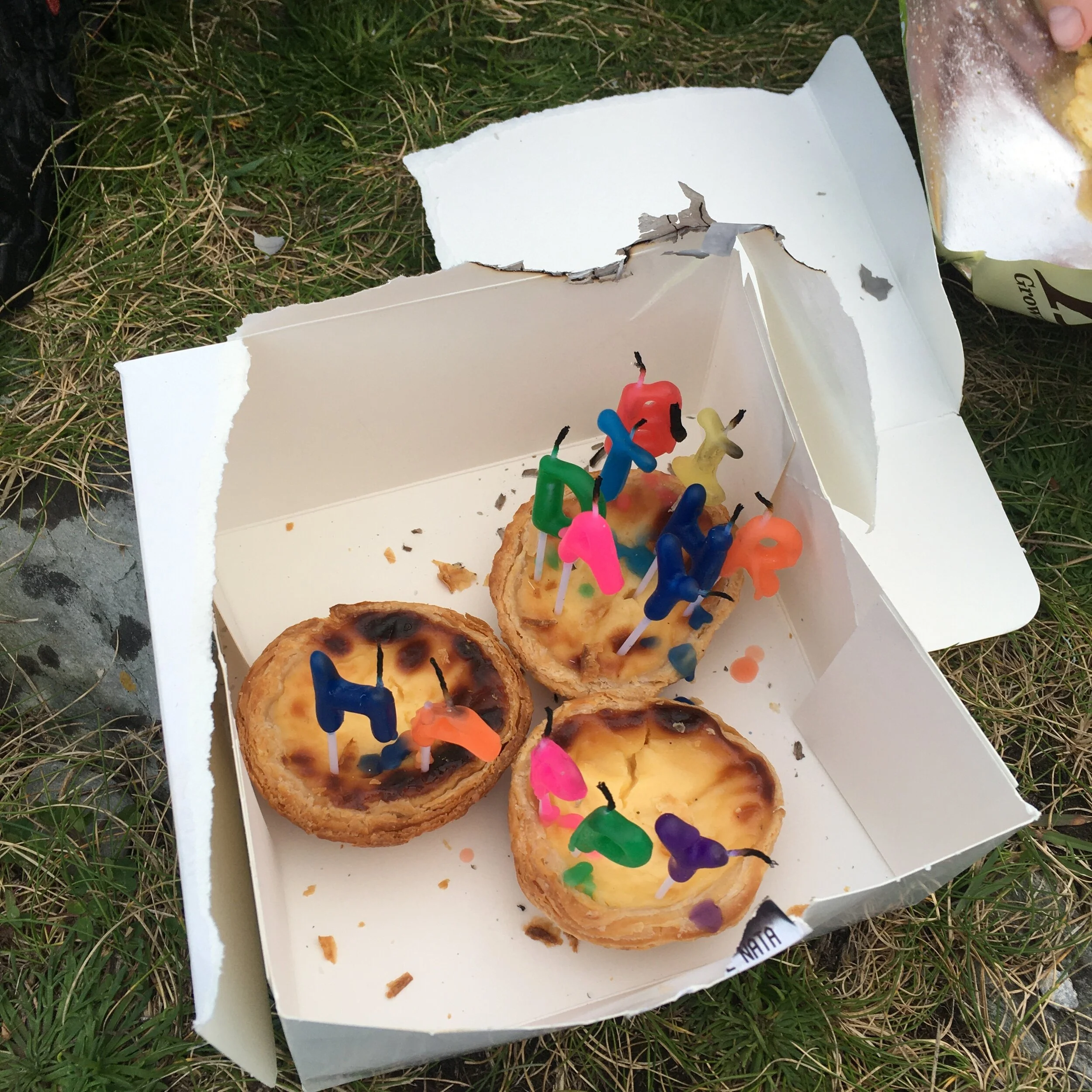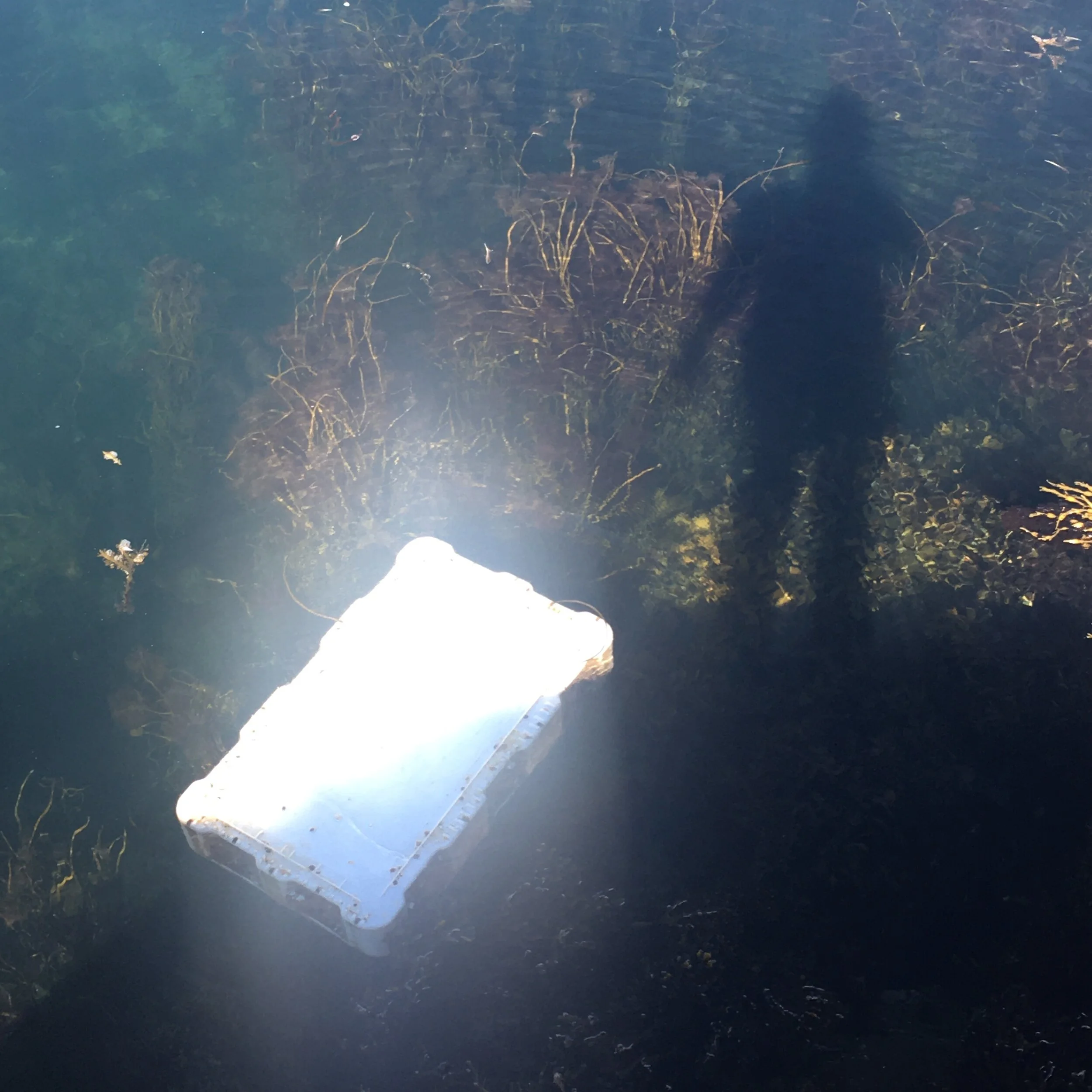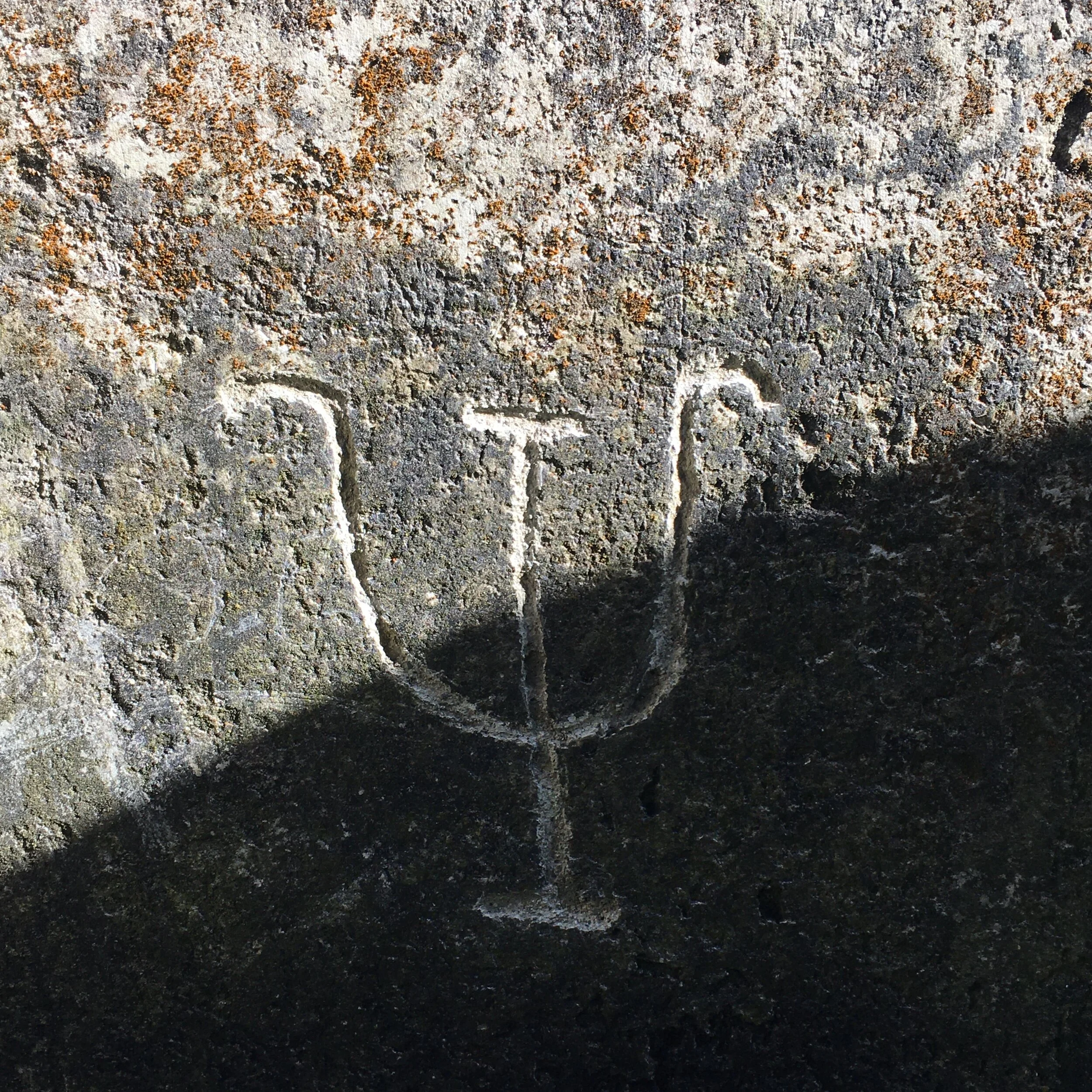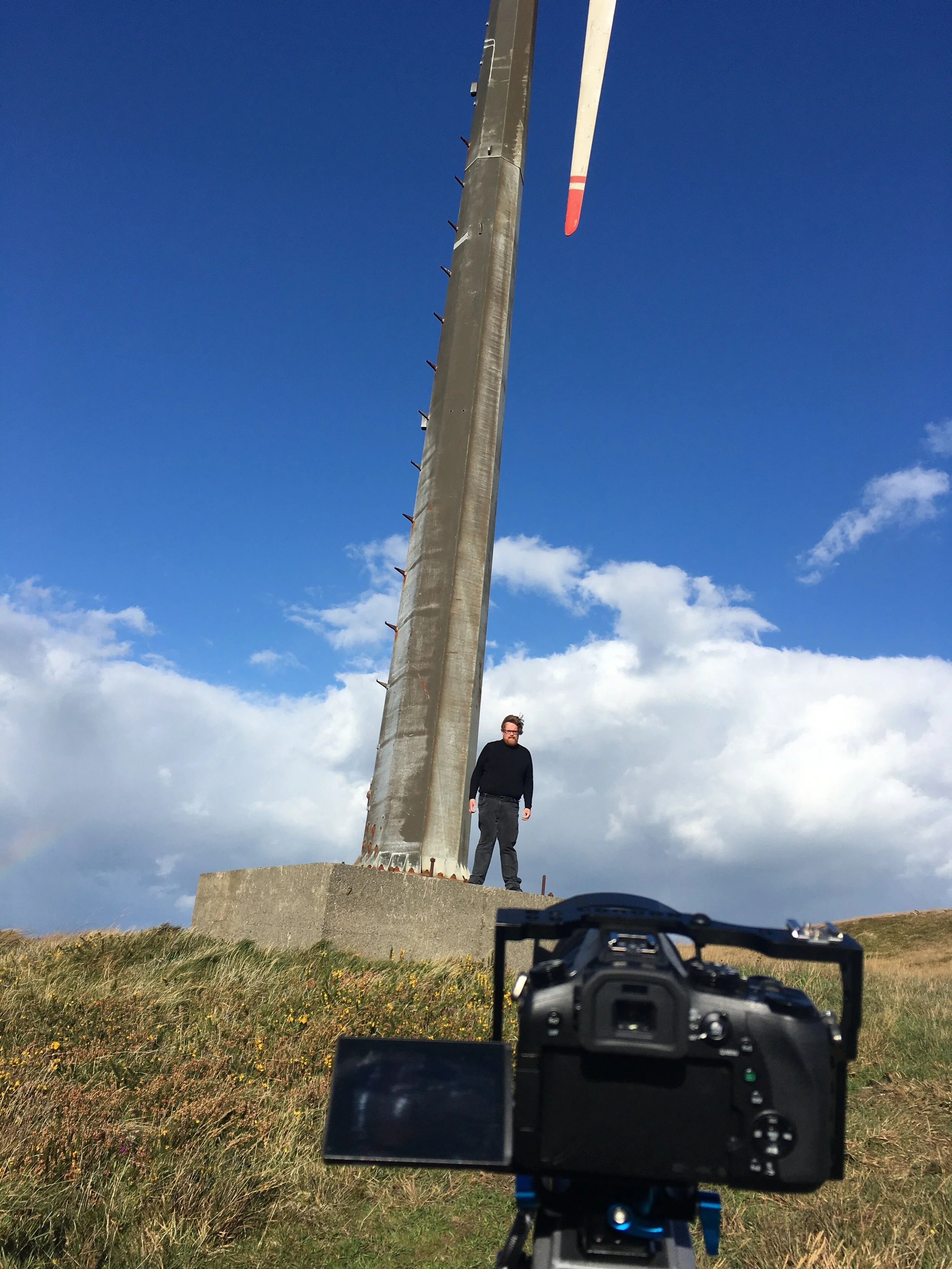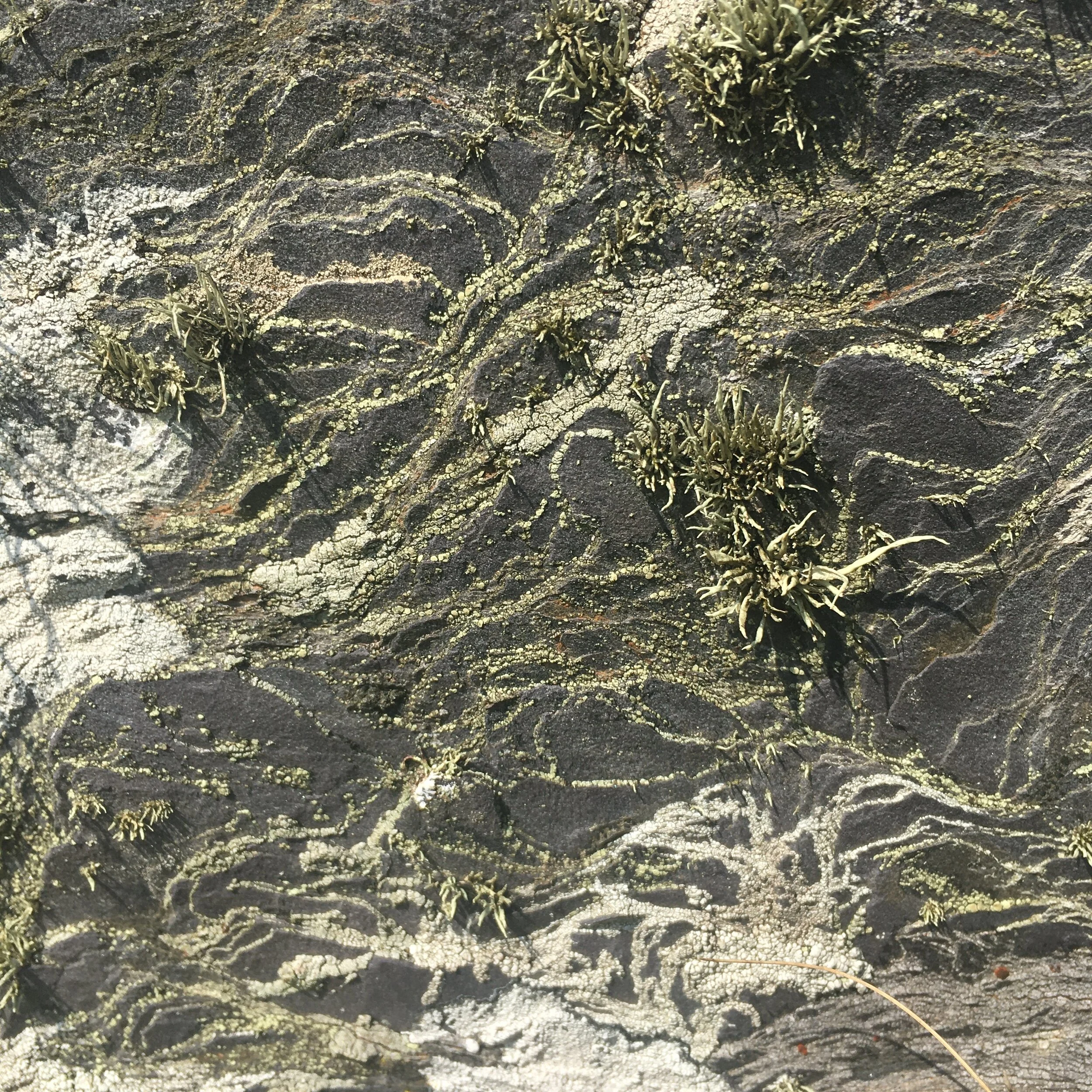Oileán AiR gave me space to repair/heal after a particularly emotionally gruelling summer. There, I could be alone in nature, surrounded by the sea for two months. I knew that with my partner working from home, and my daughter now an independent and capable teenager, that it was a uniquely fortuitous time to undertake a residency like this. I wanted to wander alone, to feel the full weight of West Cork’s night stars bearing down on me, and to prod awake my dormant Irish. A friend of mine, a reclusive sound ecologist Michael Prime, has lived on the north-east side of the island for over twenty years and has dedicated his life to the practice of ex-situ conservation. During my time on the island, I mostly wanted to explore the intersection of the exotic flora growing on Michael’s fourteen-acre private botanical garden/nature reserve and the wildness of Cape Clear. It was my hope that by the end of my stay, I would feel comfortable enough speaking confidently in Irish about Michael’s work with plants, as well as his fascinating career as an electroacoustic improviser and sound artist. Unfortunately, the restrictions put in place to control the spread of the virus meant that Michael and I only had the chance to meet once while I was there and so my research adapted to the situation. I used my time well by interviewing islanders, photographing and identifying things growing in Michael’s garden, making recordings, observing things in nature, and reading. Early on in the residency, before another lockdown struck, I invited my collaborator and friend Maximilian Le Cain to the island and we shot a new short film together over the course of a few days. Together, we sweated as we lugged a camera, a tripod, lights and daily provisions up and down hills, through fields, woods, farmland and the sea, in both blinding end-of-summer daylight and pitch black night. That new film will be shown at Luminous Void: Twenty Years of Experimental Film Society - an overview of the twenty-year history of Experimental Film Society - at the Project Arts Centre in Dublin in 2021.
I thoroughly enjoyed any time spent with Ed Harper, the socialist goat herder and former sociology lecturer who has been living on the island since the late 1970’s. We talked for hours about the island, Ed’s blindness, childhood, senses, and dreams. I met up with some other figures on the island to have some more difficult conversations about community, conflict resolution, coexistence and island survival. When the second lockdown was announced & the island’s community Halloween celebrations were cancelled, myself, Noah and Brigid immediately set about collaboratively researching, writing, translating and designing a bilingual zine, in order to have it print-ready & delivered to islanders a week later, on Oct 31st. It featured the island's uncanny landscapes, the community in disguise, a hand-drawn map of mysterious Cléire place-names, curses, cures, poetry and more. Living with Noah and Brigid was a lot of fun. We swam together, cooked for one another, celebrated, problem-solved, listened to music, watched online concerts, filled hot water bottles, walked, talked, laughed and translated a lot over the many weeks we lived together. The restrictions meant that for most of our time on the island, we three were the only people we could socialise with, and in a sense it felt like we were three shipmates, physically cut off from our respective home-lives and families.
I walked alone at night often, observing the fear that comes from walking roads we’d been warned off going near in the dark, the fear of encountering ‘the other crowd.’ I wrestled regularly with this psychological tension, feeling my way through a spectrum of emotion encompassing defiance, bravery and total surrender to the unknown, grappling with imagined or just-out-of-sight supernatural forces. This adrenaline-fuelled sense of ‘unhinging’ would not have been possible to tap into from my home in the Cork city suburbs. The island has a particularly potent charge and I’m very grateful to have had the freedom to roam around it for two months.
Apart from shooting new work with Max, I was mostly exploring the island and documenting the places I found through recording, photography and video. I researched Michael’s older work and slowly translated some Conchúr Ó Síocháin, improving my reading as Gaeilge. I felt part of the wider world again through attending an online sean-nós singing workshop with the brilliant Nell Ní Chróinín, Tai Shani’s powerful ‘Feminism’s Occult Imagination’ talk for the Courtauld Institute of Art, a symposium on Riddley Walker. I guest hosted one night of the online/international edition of Tusk Festival by taking viewers on a kind of tour of the island. Towards the end of my stay, I made a series of field recordings - microphones thrown down an enormous gaping hole in a cliff on the island (Poll an Amhrais), buried in gorse bushes, clipped onto branches, etc. A collection of these recordings was broadcast on Oileáin FM, the island’s community radio station.
There’s nothing calm about the sound of Oileán Chléire - it may have been my particularly raw state of mind, but the island can be quite overwhelming when you tune into it. You’re surrounded by sea and wind, all day every day - it’s inescapable, and it makes the landscape around you howl, and wail, and rumble. It was an emotionally difficult year, and I wasn’t sure that I had it in me to ever make creative work again. I felt completely empty. Finished. The Oileán AiR residency scooped me up at exactly the right time. The solitude and the island’s elements repaired me somewhat, and reminded me how important the simple act of listening and noticing is to me.











